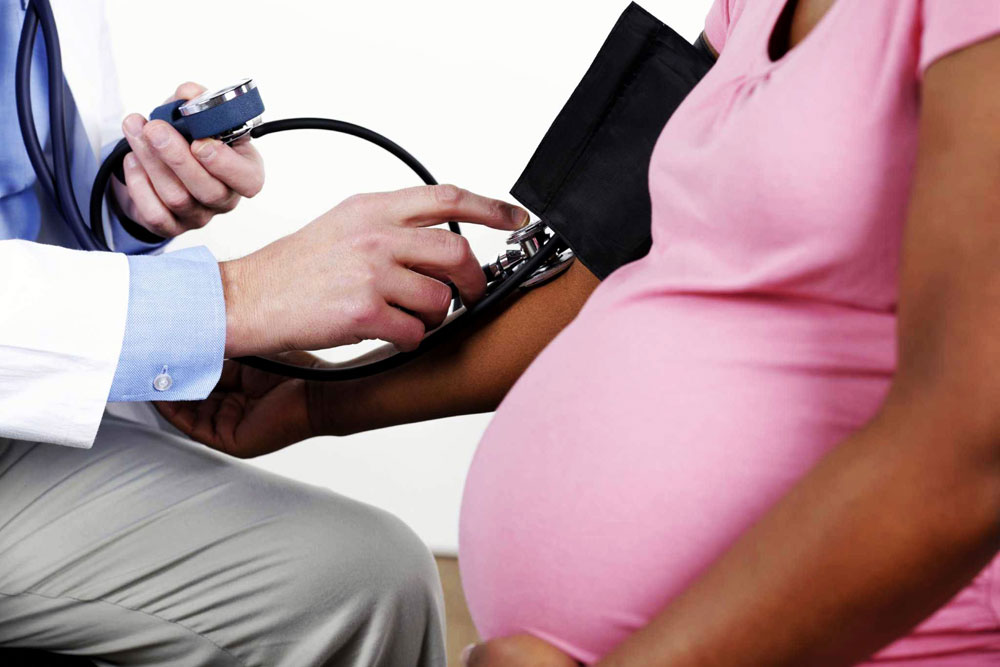Preeclampsia is one of the most serious complications which may occur during pregnancy. More specifically, it falls under the hypertensive disorders of pregnancy. This condition is not uncommon and can be expected more towards the end of the pregnancy, after the 20th week of gestation.
In this post, we review the common hypertensive disorders of pregnancy and provide some information regarding preeclampsia and its effects on pregnancy.
Hypertensive disorders of pregnancy
Let us review the hypertensive disorders of pregnancy first for a clearer understanding.
- Chronic hypertension
Defined as the presence of hypertension (high blood pressure, measured as more than 140/90 mmHg) diagnosed before the 20th week of gestation. In some cases, hypertension can be diagnosed after the 20th week of gestation and persist beyond the 12th week postpartum, which also indicates the existence of chronic hypertension.
Preexisting chronic hypertension, especially if poorly managed, may lead to superimposed preeclampsia which is a serious and life-threatening condition for the mother and the baby.
- Preeclampsia/Eclampsia
Preeclampsia is defined as the presence of high blood pressure as well as proteinuria (presence of protein in urine) found after the 20th week of gestation.
Eclampsia is defined as the presence of seizures in a woman with preeclampsia which cannot be attributed to other causes.
These conditions are among the major causes of the 24-hour urine sample collection for a thorough investigation of the presence of protein in the urine, due to the seriousness of this condition.
- Superimposed preeclampsia
This condition is defined as the discovery of abnormal amounts of protein in the urine after the 20th week of gestation in women with pre-existing chronic hypertension.
Risk Factors
Although the definitive etiology behind the presence of preeclampsia is not entirely understood, some risk factors have been identified that increase the risk of its occurrence. Some of the common risk factors are listed below:
- First pregnancy
- Obesity
- Age <18 or >35 yrs
- Previous history of preeclampsia
- Some chronic underlying illnesses
(hypertension, diabetes mellitus, anti-phospholipid disease, vascular connective tissue diseases, renal failure)
- Oligohydramnios (low amniotic fluid index)
- Placenta disorders
Diagnosis
The diagnosis of preeclampsia starts with the detection of high blood pressure. That is why in every prenatal routine visit, a measurement of blood pressure is documented. In case of the detection of high blood pressure, analysis of urine (either 24-hour collection or random sample) will follow to detect any protein and finalize the diagnosis.
Preeclampsia is expected more towards the end of pregnancy, which is one of the reasons why more frequent visits (bi-weekly from the 28th week and weekly from the 34th week of gestation) are scheduled when nearing the final stages.
Symptoms and Complications
What happens through preeclampsia is that there is a narrowing of blood vessels in different organs, which leads to the reduction of the amount of blood flow to those organs and brings forth some symptoms.
These are serious and life-threatening symptoms that could affect both the baby and the mother.
The baby, suffering from the decreased supply of oxygen and nutrients, may face long-term damages, including neurological and brain injuries, intra-uterine growth retardation, or small for gestational age. The effects on the baby may be perceived by the mothers as reduced activity such as fewer kicking and contractions.
The mother, suffering from decreased oxygen supply to different organs, may present with headache, vision changes (blurred vision, flashing lights, blind spots), nausea and vomiting, kidney injury (presence of protein in the urine, swelling in arms, legs, face), abdominal pain, liver failure, seizures, and ultimately death.
One of the most serious complications with preeclampsia is the HELLP syndrome, defined as Hemolysis (breakdown of blood cells), Elevated Liver enzymes, and Low Platelet. This serious condition is associated with high risks of maternal or fetal mortality through impaired liver function, bleeding, and brain damage.
Management
Due to the serious nature of this condition, the definitive treatment for preeclampsia includes the termination of pregnancy. However, this decision lies in a thorough assessment by an obstetrician specialist and the healthcare team.
The priority lies with keeping the mother safe through the delivery of a healthy baby. Factors affecting the decision mostly include the age of gestation and development and well-being of the baby.
Upon detection of preeclampsia, the mother will be admitted to the hospital for close monitoring of both the mother and baby’s condition, and deciding on the termination of pregnancy, often through cesarean section.
In some cases, some medications may be used to advance the baby’s lung maturity and prevent seizures.
Conclusion
Preeclampsia and its related syndromes are one of the most serious and concerning complications which occur mostly towards the end of pregnancy. It is detected by measurement of high blood pressure and the presence of proteins in urine.
Due to the seriousness of this condition, it is highly recommended to adhere to routine prenatal visits, especially towards the end of pregnancy, and frequently assess and document your blood pressure. It is vital to inform your healthcare provider and seek medical attention in case of detecting any of the mentioned symptoms, such as high blood pressure, headache, vision change, swelling in legs, arms, or face, nausea and vomiting, abdominal pain, frothy urine, or any easy bruising or bleeding.




